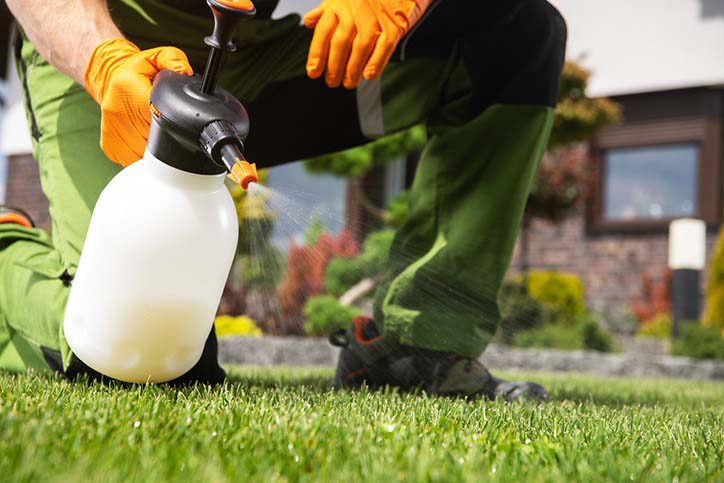Herbicides, also known as weed killers, are a common household product. The spring season brings warmer weather and a chance to spend more time outside. You may also notice more weeds growing in your lawn or garden. Let’s learn more about herbicides and how to safely use and store them.
Read the Label
The most important part of using weed killers safely is by reading and following the label directions. Not all weed killers are the same, so each product may work differently. Follow the directions on how to use it and how long to stay away from the sprayed area. If your pet walks in the area where the product is being sprayed, wipe their paws and nose to make sure they don’t have any product on them.
Some fertilizers contain herbicides, therefore it’s again very important to read the label before using any household or yard product to ensure you know what is in it and how to safely use it.
Wear Protective Clothing
It is best to wear protective clothing when using these products. This includes
- Long sleeves
- Long pants
- Gloves
- Protective eyewear
- Closed-toe shoes
After using weed killer, remove and wash the clothing in case any has gotten on it.
Safe Storage
Weed killer should always be stored in its original labeled container. Never store weed killer in a food or beverage container. It is easy to mistake the product for a juice or other drink. This can lead to someone accidentally drinking it.
Always store products up, away, and out of sight. If left in a reachable space, children and pets may get into the product.
Weed Killer Ingredients
There are three main types of weed killer depending on what it is you are looking for the product to do and what kind of weed you have. Preemergent products are used before weeds grow, post-emergent products are used once weeds have grown, and non-selective products kill both grass and weeds. It is best to identify a weed to choose the best product for your yard.
Most products contain ingredients that are irritating to the skin and eye. If any weed killer gets on the skin or in the eye, follow the first aid steps below or use our one-page first aid information sheet.
Preemergent weed killers that contain ingredients such as pendimethalin, prodiamine, or benefin are also found to irritate the lungs if the dust or fume is breathed in and causes nausea and vomiting if swallowed. If large amounts of these products are swallowed, it can lead to sleepiness.
Post-emergent weed killers for broadleaf weeds contain the ingredient chlorphenoxy, also known as 2,4 D, dicamba, etc. These products are irritating to the skin, eye, and mouth. If a large amount is swallowed, it can cause increased heart rate and changes in heart rhythm, sleepiness, and muscle weakness.
Non-selective vegetation killers contain the ingredient glyphosate. If product gets in the eyes, it can cause irritation or even an eye infection. If product gets on the skin, it can cause redness, goose bumps, or skin infection. If small amounts are swallowed, it can cause nausea, vomiting, diarrhea, drowsiness, and mouth pain.
First Aid for Poisoning
As with any other household or yard product, it’s possible to be exposed to an herbicide on the skin, in the eye, by swallowing the dust or liquid, or by inhaling the fumes or mist. It is important to perform the following first aid then call the Maryland Poison Center (MPC) for more information. When calling, have the product with you so that the specialist can give you information for the specific product you used.
Skin Exposures
If protective clothing isn’t worn and the product isn’t being used properly, you may get the weed killer liquid on your skin. If this happens, rinse the skin with lukewarm, not hot, water for 10 minutes, then call the MPC for more help.
Eye Exposures
It is best to wear some form of protective eyewear when using weed killers. This could be glasses, sunglasses, or safety glasses. While spraying, the wind might blow the product back into your face and get into your eyes. If you do get weed killer in your eyes, flush the eye with lukewarm, not hot, water for 15 minutes. Blink the eye as much as possible, but do not force the eyelid open. After flushing the eye, call the MPC for more help.
Swallowed Poison
If weed killer is swallowed, gently wipe out the mouth and drink a small amount of water. Do not make a person vomit by putting a finger in their throat or giving them any kind of home remedy. Call the MPC as soon as you think weed killer has been swallowed. Do not wait for symptoms to call.
As always, the MPC is available 24/7/365. Call 1-800-222-1222 to speak with a poison expert. Calling is always free and confidential.





Leave a Reply